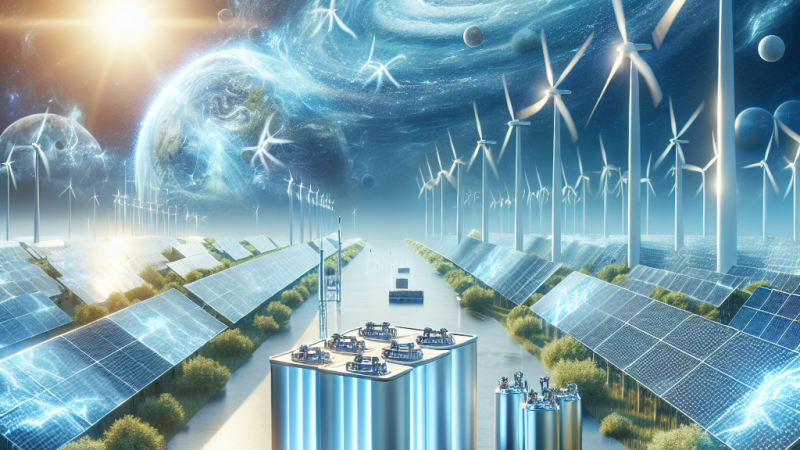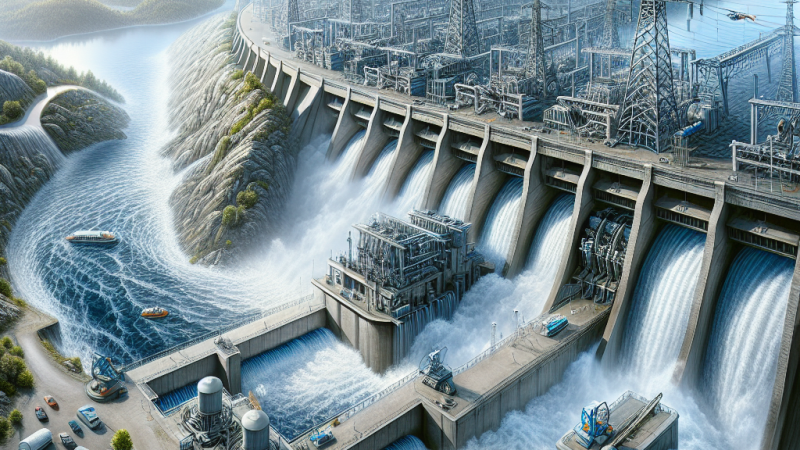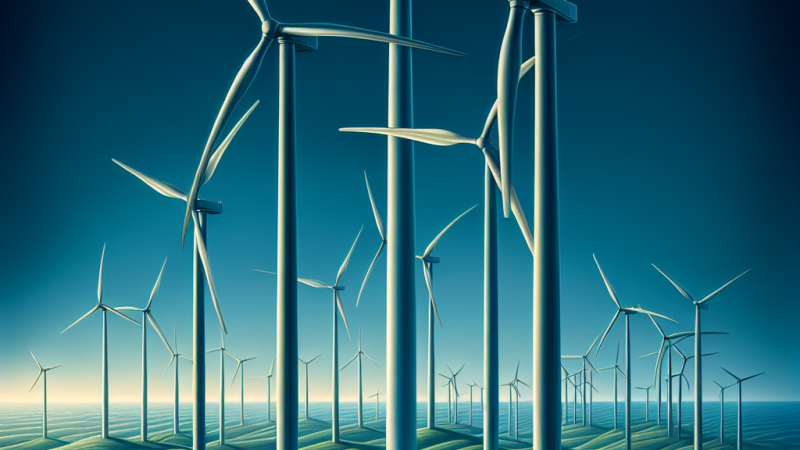Ocean Energy Systems
Introduction

As the world grapples with the pressing need to transition from fossil fuels to renewable energy sources, ocean energy systems have emerged as a promising solution. These systems harness the vast and largely untapped energy potential of the world’s oceans, offering a sustainable and environmentally friendly alternative to traditional energy sources. In the field of engineering, ocean energy systems represent a cutting-edge area of research and development, with the potential to significantly contribute to global energy needs. This article delves into the various aspects of ocean energy systems, exploring their fundamentals, historical development, applications, advanced topics, challenges, and future prospects.
Fundamentals
Basic Principles and Concepts
Ocean energy systems encompass a range of technologies designed to capture energy from the ocean’s natural movements and convert it into usable power. The primary sources of ocean energy include:
- Wave Energy: Generated by the movement of surface waves, wave energy can be harnessed using devices such as point absorbers, oscillating water columns, and attenuators.
- Tidal Energy: Produced by the gravitational pull of the moon and the sun, tidal energy can be captured using tidal stream generators and tidal barrages.
- Ocean Thermal Energy Conversion (OTEC): Utilizes the temperature difference between warm surface water and cold deep water to generate electricity through a heat engine.
- Salinity Gradient Energy: Also known as blue energy, this form of energy is derived from the difference in salt concentration between seawater and freshwater, typically harnessed using pressure retarded osmosis (PRO) or reverse electrodialysis (RED).
Key Terms and Definitions
- Amplitude: The height of a wave from its mean level to its crest or trough.
- Frequency: The number of wave cycles that pass a fixed point per unit time.
- Oscillating Water Column (OWC): A device that captures wave energy by using the motion of water to compress air, which then drives a turbine.
- Tidal Stream Generator: A device that captures kinetic energy from tidal currents using underwater turbines.
- Heat Engine: A system that converts thermal energy into mechanical work, often used in OTEC systems.
Historical Development
The concept of harnessing ocean energy is not new; it dates back several centuries. However, significant advancements have been made in recent decades, driven by technological innovations and a growing emphasis on renewable energy.
Early Developments
One of the earliest recorded attempts to harness ocean energy was in the 18th century when French engineer Pierre-Simon Girard proposed using tidal power to drive machinery. In the early 20th century, the first practical wave energy device was developed by Yoshio Masuda, a Japanese naval commander, who created a buoy that generated electricity from wave motion.
Modern Milestones
The late 20th and early 21st centuries saw significant progress in ocean energy technologies:
- 1970s: The oil crisis spurred interest in alternative energy sources, leading to increased research and development in ocean energy.
- 1990s: The European Union launched several initiatives to promote ocean energy, resulting in the development of pilot projects and demonstration plants.
- 2000s: Technological advancements and increased funding led to the commercialization of several ocean energy devices, including the Pelamis wave energy converter and the SeaGen tidal turbine.
- 2010s: The establishment of international collaborations and research centers, such as the European Marine Energy Centre (EMEC), further accelerated the development and deployment of ocean energy systems.
Applications
Ocean energy systems have a wide range of practical applications across various industries and fields. Some notable examples include:
Electricity Generation
The primary application of ocean energy systems is the generation of electricity. Wave and tidal energy converters, as well as OTEC systems, can be integrated into national grids to provide a reliable and sustainable source of power. For instance, the MeyGen project in Scotland is one of the world’s largest tidal energy projects, with the potential to generate up to 398 MW of electricity.
Desalination
Ocean energy can also be used for desalination, providing a sustainable solution to freshwater scarcity. Wave-powered desalination plants, such as the Carnegie Clean Energy project in Australia, use wave energy to drive reverse osmosis processes, producing potable water from seawater.
Offshore Platforms
Ocean energy systems can power offshore platforms, such as oil rigs and aquaculture farms, reducing their reliance on fossil fuels. For example, the Ocean Power Technologies (OPT) PowerBuoy provides a renewable energy source for offshore monitoring and communication systems.
Coastal Protection
Wave energy devices can also serve as coastal protection structures, mitigating the impact of storm surges and erosion. The Wave Hub project in the UK, for instance, combines wave energy generation with coastal defense, providing a dual benefit to coastal communities.
Advanced Topics
Recent Research and Innovations
Recent advancements in ocean energy systems have focused on improving efficiency, reducing costs, and enhancing reliability. Some notable innovations include:
- Advanced Materials: The development of corrosion-resistant materials and coatings has extended the lifespan of ocean energy devices, reducing maintenance costs and improving performance.
- Hybrid Systems: Combining different ocean energy technologies, such as wave and tidal energy, can enhance overall efficiency and provide a more consistent power output.
- Artificial Intelligence (AI): AI and machine learning algorithms are being used to optimize the operation and maintenance of ocean energy systems, predicting failures and improving energy capture.
- Floating Platforms: Floating OTEC and wave energy platforms are being developed to harness energy in deeper waters, where wave and thermal resources are more abundant.
Future Trends
The future of ocean energy systems looks promising, with several trends expected to shape the industry:
- Increased Investment: Growing recognition of the potential of ocean energy is likely to attract more investment from both public and private sectors.
- Global Collaboration: International partnerships and collaborations will play a crucial role in advancing ocean energy technologies and accelerating their deployment.
- Policy Support: Supportive policies and regulatory frameworks will be essential to drive the growth of the ocean energy sector and ensure its integration into national energy strategies.
- Technological Integration: The integration of ocean energy systems with other renewable energy sources, such as wind and solar, will create more resilient and efficient energy networks.
Challenges and Considerations
Despite the significant potential of ocean energy systems, several challenges and considerations must be addressed to ensure their successful deployment and operation.
Technical Challenges
Ocean energy devices operate in harsh marine environments, facing challenges such as corrosion, biofouling, and extreme weather conditions. Developing robust and reliable technologies that can withstand these conditions is crucial for the long-term viability of ocean energy systems.
Environmental Impact
While ocean energy is generally considered environmentally friendly, it is essential to assess and mitigate any potential impacts on marine ecosystems. This includes evaluating the effects of noise, electromagnetic fields, and physical structures on marine life.
Economic Viability
The high initial costs of ocean energy projects, coupled with the need for specialized infrastructure, can pose economic challenges. Reducing costs through technological advancements, economies of scale, and supportive policies will be key to making ocean energy competitive with other renewable energy sources.
Regulatory and Permitting Issues
Navigating complex regulatory and permitting processes can be a significant barrier to the deployment of ocean energy systems. Streamlining these processes and providing clear guidelines will be essential to facilitate the growth of the industry.
Conclusion
Ocean energy systems represent a promising and sustainable solution to the world’s growing energy needs. By harnessing the vast and largely untapped energy potential of the oceans, these systems offer a renewable alternative to traditional fossil fuels. The field of ocean energy is characterized by ongoing research, innovation, and collaboration, with significant advancements being made in technology, efficiency, and cost reduction. However, several challenges must be addressed to ensure the successful deployment and operation of ocean energy systems, including technical, environmental, economic, and regulatory considerations. As the world continues to transition towards renewable energy, ocean energy systems will play an increasingly important role in shaping a sustainable and resilient energy future.






